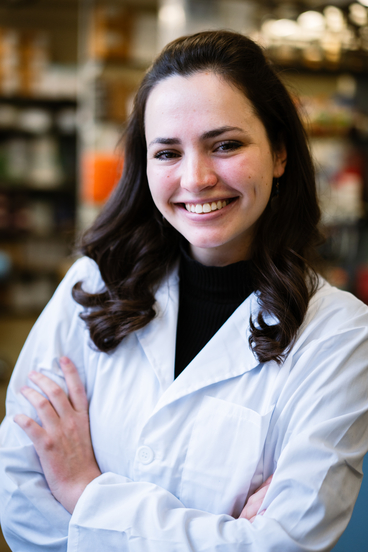
Scientists can’t address the origins of life without having a basic understanding of evolution.
You’d think that would make the origins of life a popular research topic for evolutionary biologists. But Maria Kalambokidis, Ph.D. candidate in Ecology, Evolution and Behavior, and recent recipient of the NASA Future Investigators Fellowship, may be one of only a handful across the globe investigating the topic. She thinks it might be because the origins of life, also called abiogenesis, has mostly been studied by chemists.
“It’s difficult to come into the field when you have a completely different scientific background than someone else,” says Kalambokidis. “There are insights from evolution that you might miss by only taking the perspective of a chemist.”
In a new publication in the journal Evolution, Kalambokidis, along with her co-author and Ph.D. advisor Michael Travisano, outlines a fresh approach that uses principles from ecology and evolution to examine how evolvable systems — from cellular organisms to molecules like RNA — gain complexity. She hopes it can encourage other biologists to join her in asking larger-than-life questions.

An unreliable witness
If scientists could study the origin of life via a time machine, they would. Instead, they’re stuck re-imagining the events of over four billion years ago with a limited lens. One “chemistry-forward” approach tries to recreate the conditions that catalyzed earth’s most basic life forms. Another “biology-backwards” angle traces the evolutionary tree back to its earliest ancestor.
Kalambokidis isn’t satisfied with either. While each approach informs a great deal about pre- and post-cellular life, they fail to bridge the gap between them. “There’s simply no world in which they will meet in the middle,” says Kalambokidis.
Abiogenesis, the emergence of life from non-living molecules, occurred due to chance events over hundreds of millions of years. Evolution is unpredictable even in modern controlled lab settings. “This unpredictability only increases given long timescales and our limited understanding of early Earth,” says Kalambokidis, who’s accepted that our knowledge of the past will always be incomplete.
Scientists interested in the origins of life often design their experiments based on assumptions about the ancient environments that existed when life emerged. Life emerging from a “prebiotic soup” near thermal vents is one example. Others think a molecule called ATP was generated before complex molecules became life-like. So a chemist might design an experiment with ATP generation as an end goal. “In that case, you’re limited by the hypothesis of the origin of life that presupposes [ATP] must have existed somewhere early along the line,” says Kalambokidis.
While it’s likely the case that ATP generation occurred as a precursor to cellular life, we may never be able to prove its evolutionary trajectory, and it’s not necessarily helpful in identifying how life could emerge, here and now … or perhaps even how life could emerge in extraterrestrial systems.
Instead, Kalambokidis chooses to focus on processes we know were present during abiogenesis–such as the mechanisms and principles observed in ecology and evolution. “Life always involves a population of organisms that interact with each other and the environment,” she says. “So there must have been ecological interactions that influenced the evolution of pre-cellular systems.”
Back to (biology) basics
On a large scale, biologists use these principles to describe how shifting ecosystem dynamics affect local species, and vice versa. An environment can shape how a species evolves over time, but then that same species can affect its environment in profound ways. Add in more variables, like climate, sexual selection, and other species and it can get messy to untangle. But it may be possible.
The same dynamics exist on a small scale. Even in a stable, static environment, molecules like RNA can participate in eco-evolutionary feedback loops which alter both the genome and “ecosystem” of successive generations. And while a chemistry-forward approach might be stuck on one particular outcome, Kalambokidis is more interested in the multitude of ways life can gain complexity. She’s already demonstrated this approach in a recent experiment outlining how the evolutionary and ecological dynamics of two single-celled yeast species resulted in multicellularity.
Her way of studying abiogenesis isn’t so different than studying evolution – that is, while we don’t have a way of going back in time to eye-witness the slow evolution of Homo sapiens, today we can watch populations of bacteria change rapidly under observation — passing on new genomes that eventually distinguish one strain from another.
“Our hope is that we've recast questions so the origins of life can more clearly be studied by evolutionary biology,” says Kalambokidis. “It's not understanding how life emerged early on, but how it could emerge. What are some of those ways that that can happen?” — Adara Taylor